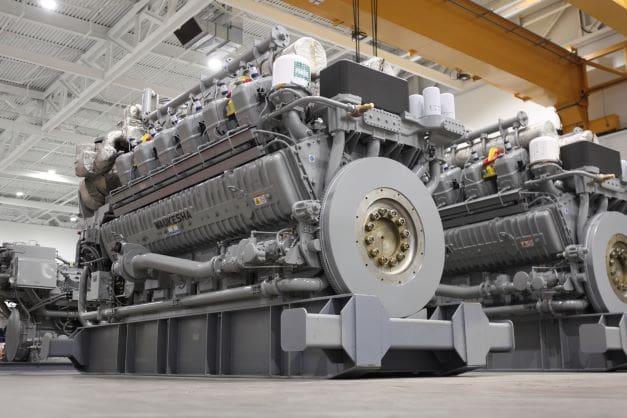INNIO Waukesha Gas Engines (Waukesha) has been selected to receive more than US$2.2 million in funding from the US Department of Energy’s Advanced Research Projects Agency-Energy (ARPA-E). The funding is part of ARPA-E’s “Reducing Emissions of Methane Every Day of the Year” (REMEDY) program.
REMEDY is a three-year, US$35 million research program to reduce methane emissions from three sources in the oil, gas, and coal value chains:
- Exhaust from 50,000 natural gas-fired lean-burn engines. These engines are used to drive compressors, generate electricity, and increasingly repower ships.
- The estimated 300,000 flares required for safe operation of oil and gas facilities.
- Coal mine ventilation air methane exhausted from 250 operating underground mines.
These sources are responsible for at least 10% of US anthropogenic methane emissions. The program aims to reduce emissions in the oil, gas, and coal industries and promote innovation and manufacturing of new technologies to achieve climate goals.
In support of the United States’ emissions reductions plan announced at the 2021 United Nations Climate Change Conference (COP26), ARPA-E announced 12 funding awards to develop and demonstrate technologies aimed at cutting greenhouse gas emissions in the oil, gas, and coal sectors. INNIO Waukesha received funding for its proposed project that is focused on developing a new line of pistons.
Waukesha plans to develop new technology that will reduce methane slip by reducing the crevice volume in engine combustion chambers. This will broadly apply to all natural gas-fueled lean-burn engines, and can be retrofitted to a fleet of existing engines with little to no increase in budgeted costs. Emissions of regulated pollutants such as carbon monoxide, volatile organic compounds, and formaldehyde will be reduced, while nitrogen oxides will stay the same. This means no emissions re-permitting will be necessary after installation. The new technology will reduce operating costs and is similar to existing components, meaning no retraining will be required for support technicians.
“At INNIO, our research and development teams are intently focused on identifying, demonstrating, and delivering viable innovations that will help shape the energy transition. We believe a critical path to a cleaner energy future is providing carbon reducing enhancements for installed assets that will lead to an extended life and investment security,” said Dr. Olaf Berlien, president and CEO of INNIO. “We are pleased that ARPA-E has recognized that our carbon reduction research may yield an impactful carbon reduction approach for both new and installed engines everywhere.”
Waukesha’s REMEDY funding will be spread across two stages of the program over three years. Stage 1 is planned to focus on lab-based tests confirming the operability of technical proposals, approaches, and system components. Stage 2 will expand the scale of testing, and ideally include field tests. The new technology aims to meet the REMEDY goal of 99.5% methane destruction.
“As a global supplier of energy services, INNIO Waukesha is constantly searching for new and innovative solutions to reduce emissions levels and reduce carbon footprints to support our customers and their communities,” said Bud Hittie, president of INNIO Waukesha. “We look forward to aggressively moving forward with our engine research and development to continue delivering technology for a cleaner energy future.”

















